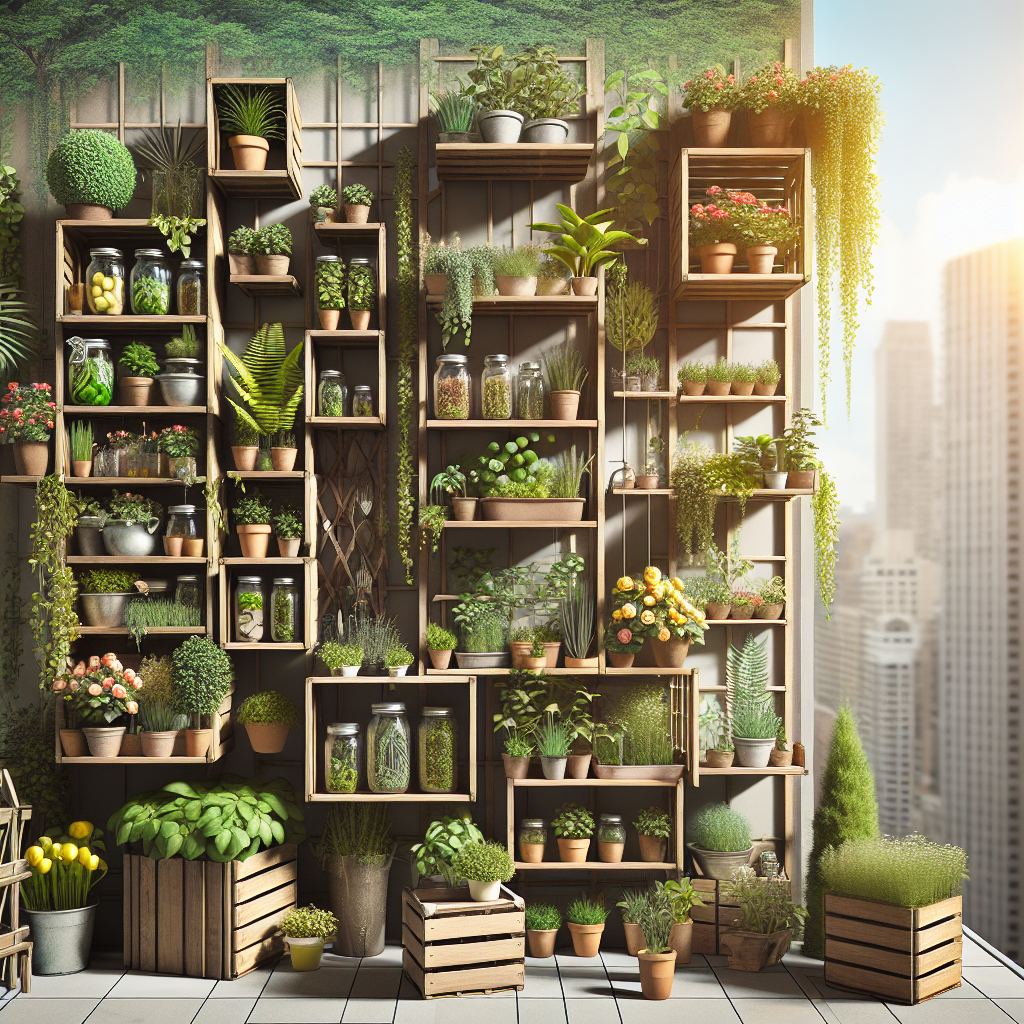Maximizing small spaces with Creative Container Gardening Tips
Urbanization has led to the shrinking of personal spaces, leaving many yearning for the lush greenery of gardens that once sprawled across yards. While the luxury of expansive gardens may be out of reach for city dwellers, container gardening offers a creative and fulfilling alternative. By employing innovative techniques, anyone can transform even the smallest balcony or windowsill into a thriving green haven. This article delves into various tips and tricks to help you maximize small spaces with container gardening.
Understanding Container Gardening
container gardening is the practice of growing plants exclusively in containers—pots, boxes, or other vessels—rather than planting them directly in the ground. This method is perfect for urban environments where space is limited and allows for greater control over soil conditions, drainage, and plant mobility.
Choosing the Right Containers
The first step in successful container gardening is selecting appropriate containers. The choice of container affects not only aesthetics but also plant health. Here are some considerations:
Size Matters
For healthy plant growth, ensure that containers are adequately sized to accommodate root development. Most vegetables require at least 12-18 inches in depth and width.
Material Composition
Containers come in various materials such as plastic, clay, ceramic, wood, and metal. Each material has its pros and cons:
- Plastic: Lightweight and often more affordable but can retain more heat.
- Clay/Terracotta: Porous and good for aeration but can dry out quickly.
- Wood: Natural-looking but susceptible to rot if not treated.
- Metal: Durable but can heat up rapidly under direct sunlight.
Drainage
Proper drainage is crucial to prevent waterlogging. Ensure your containers have sufficient drainage holes at the bottom. If they don’t, consider drilling a few yourself.
Selecting Plants Wisely
When space is at a premium, thoughtful plant selection becomes essential. Consider these factors:
Growth Habit
Opt for compact or dwarf varieties that won’t outgrow their containers quickly. Herbs like basil or thyme, compact vegetables like cherry tomatoes or peppers, and small flowering plants like marigolds are excellent choices.
Climbers vs Trailers
Vertical gardening techniques can double your growing area:
- Climbing plants like beans or cucumbers can be trained upward on trellises.
- Trailing plants like strawberries or nasturtiums can spill over sides of containers creating a lush appearance without occupying extra floor space.
Companion Planting
Certain plants grow better together due to mutually beneficial relationships—this concept is known as companion planting:
- Basil planted alongside tomatoes enhances flavor while repelling pests.
- Marigolds deter nematodes when grown near vegetables like beans or peas.
Soil Mixes Tailored for Container Gardening
Unlike traditional garden beds where soil remains relatively stable over time; potted environments require specialized soil mixes:
Choosing Potting Mix
Standard garden soil often compacts too much in containers leading to poor root growth & drainage issues; Instead opt-in for commercial soilless potting mix comprising peat moss/perlite/vermiculite which ensures adequate aeration & moisture retention properties desired by most potted specimens.
DIY Blends
Creating custom blends allows better control over specific needs:
- Equal parts peat moss/coir + perlite + compost gives balanced mix suitable across wide range species from veggies/herbs/flowers alike
- Adding slow-release fertilizer pellets maintains steady nutrient supply avoiding frequent feedings
Creative Arrangements Boosting Aesthetic Appeal
Apart from functional value enhancing beauty quotient matters just as much when dealing constrained spaces:
Vertical Gardens
Utilize walls fences constructing vertical layers holding numerous pots adding considerable plantation area aesthetically pleasing manner eg using wooden pallets repurpose old ladders into multiple shelves accommodating staggered layering henceforth utilizing upward rather outward spread transforming barren walls lush greenery filled spectacles
Tiered Stands
Stacking planters various heights simulate illusion larger coherent greenscape example tiered herb garden stand placeable kitchen countertops augment culinary experiences whilst staying fresh fragrant within arm’s reach every time requiring fresh seasoning touch
Hanging Baskets
Suspended off ceilings balustrades hanging planters introduces another dimension reducing footprint considerably attractive way trailing viney species ideal candidates cascading downwards creating mini-canopy effects subdues harsh lines architecture beneath thereby softening overall ambiance rejuvenating spatial feel altogether
Integrating Decorative Elements Complement Functionality
Succeeding mere practicality merging decoration elevates entire experience satisfying visually yet remaining purpose-centric:
Colorful Containers
Lively hued pots juxtaposed against neutral backdrops produce striking visual contrasts simultaneously delineating individual sections clearly dividing thematic zones adding structure coherence especially useful differentiating herbs veggies flowers within single condensed area
Garden Art Adornments
Incorporate whimsical statues colorful pebbles fairy-tale figurines interspersed between planters breaking monotony keeping interests piqued balance decorative items avoiding clutter ensuring functionality primary focus retained
Maintenance Routine Ensuring Longevity Vitality
Every flourishing setup demands diligent upkeep ensuring sustained vibrancy :
1) Regular Watering Schedule
Plants confined pots tend drying quicker ground counterparts thus consistent watering regimen imperative maintaining hydration levels deficit incurring stress remember deep thorough soakings preferable light frequent sprinkles maximizing root absorption efficiently
2) Periodic Feeding Supplements
Nutrient depletion faster owing limited medium replenish soluble fertilizers organic compost periodically maintaining robustness preventing stunted lackluster developments
3) Pruning Trimming Essentials
Regularly snip back dead foliage pinch off spent blooms encouraging bushier healthier growth patterns eliminating disease vector entry points preserving overall aesthetics neat tidy appearances
Leisure Practicality Harmonized
By blending creativity practical considerations even smallest spaces turn thriving oases calming mental escape bustling urban life reminding us nature bonds timeless fosters well-being fulfillment despite constraints imposed modern living .
Through thoughtful planning judicious choices anyone anywhere reveal nurturing green thumb unleashing transformative potentials seemingly insignificant corners balconies patios windowsills proving limits merely perceptions waiting redefined .













